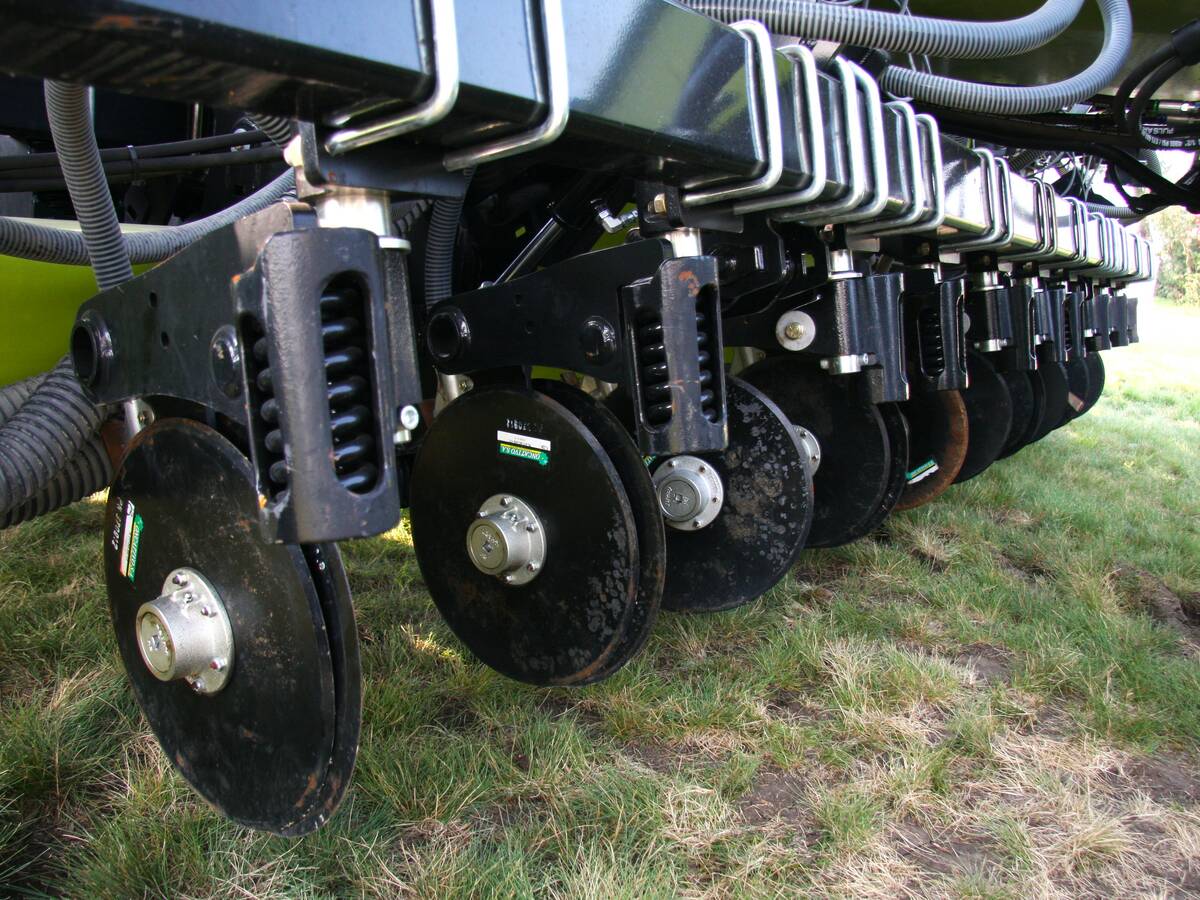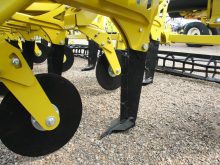Much of Western Canada has been on the minimum or no-till band wagon for the better part of 40 years, and that doesn’t seem to be changing anytime soon.
The practice has rearranged the farming landscape above and below ground by capturing carbon, improving moisture retention and allowing for a continuous cropping cycle.
However, over time, scientists, engineers and farmers have reinvented the wheel and found ways to improve the system, depending on their goals. In the last couple years, that conversation has turned to increasing soil moisture and conserving what’s already there.
Read Also

Volatile temperatures expected for this winter
DTN is forecasting a lot of temperature variability in the Canadian Prairies this winter. Precipitation should be close to average.
Jeff Schoenau, Ministry of Agriculture Strategic Research Program Chair in soil nutrient management and professor of soil science at the University of Saskatchewan, said there are a few great ways to increase and conserve moisture.
READ ALSO: Producers aim to improve minimum-tilled soil
These improvements are simple things: increasing organic matter, keeping high stubble, direct seeding, maintaining a good residue mat and addressing compaction.
”Thinking along the lines, as well of residue or straw management, is thinking about leaving enough stubble height there that you’re going to be able to trap some snow that comes over the winter period,” he said.
“That aids in amount of moisture that you can store in the soil for the crop for the upcoming season. And also, the other thing about having that standing stubble there, is that it also helps reduce the wind speed close to the soil surface, and that helps to reduce the evaporation.”
However, what are the best ways to do that?
There’s different pieces of equipment, different crop management products and a variety of services and tests, all intended to help a producer who wants to improve their farming practices.
Additional considerations include having proper weed control to not deplete moisture, having a good crop rotation and establishing a forage stand.
One area to look at is minimum till seeding, and many options are available to producers who are looking to improve their practices. Some of the latest include double disc seeders, coulter drills and low disturbance shank drills.
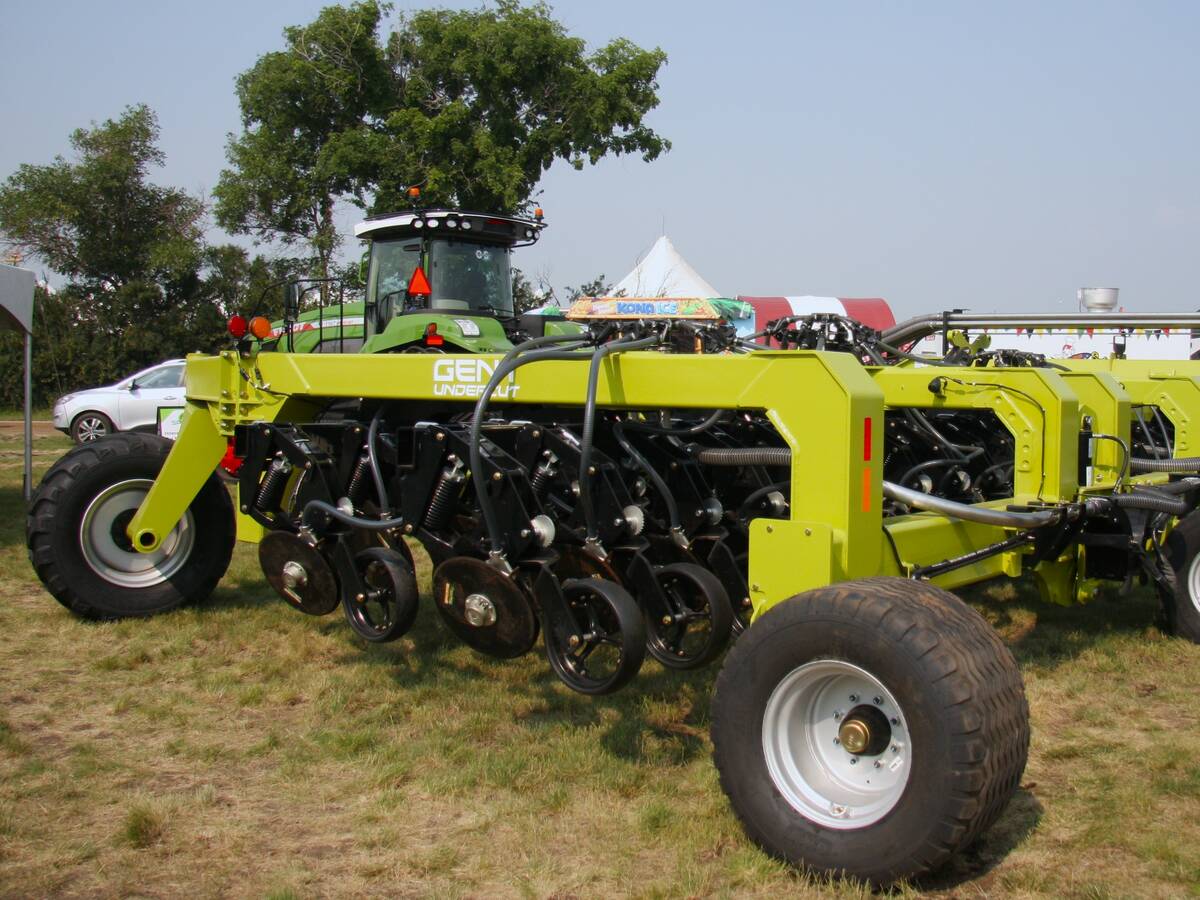
K-Hart
K-Hart sells a double disc, known as the Spyder drill, specifically for seeding into high stubble and lots of residue as well retaining moisture.
The machine is ideal for pairing with stripper headers and is a good fit for producers who use crop residue as a runoff catch. It’s outfitted with a 17-inch blade and a 15-inch blade, both set at 22.5 degrees, and it nearly entirely eliminates hairpinning.
“A single disc drill has a lot of problems in heavier soils, where they push the soil sideways to create a sidewall,” said Erron Leafloor, K-Hart’s head of engineering.
“Your root growth is limited because of that…. Having gone to two blades and putting this angle, we don’t have that side wall compaction. So, you don’t create that wall of concrete beside the seed. And so, you give it a better start, especially if the roots have to go laterally to get to fertilizer on, like, a mid-row banding system.”
The 17-inch blade acts as a coulter, cutting through residue, breaking soil and pushing it — as well as stubble — out of the way of the drill, while the 15-inch opens a slit in the ground for the seed followed by the packer wheel to close it up.
Because of the angle the blades run at, it places the seed at an angle that offers it various paths to sprout.
“Ideally, it’s going to go straight up, but if you over pack, it’s got this trench, it can go sideways and up through the slit,” said Leafloor.
“But if it dries out and that opens up, like in a heavy clay, which will happen, that’s not above the seed, it’s off to the side of the seed.”
K-Hart is the only company in North America that has a drill with such a design, but that doesn’t mean other drills can’t help improve minimum till methods.
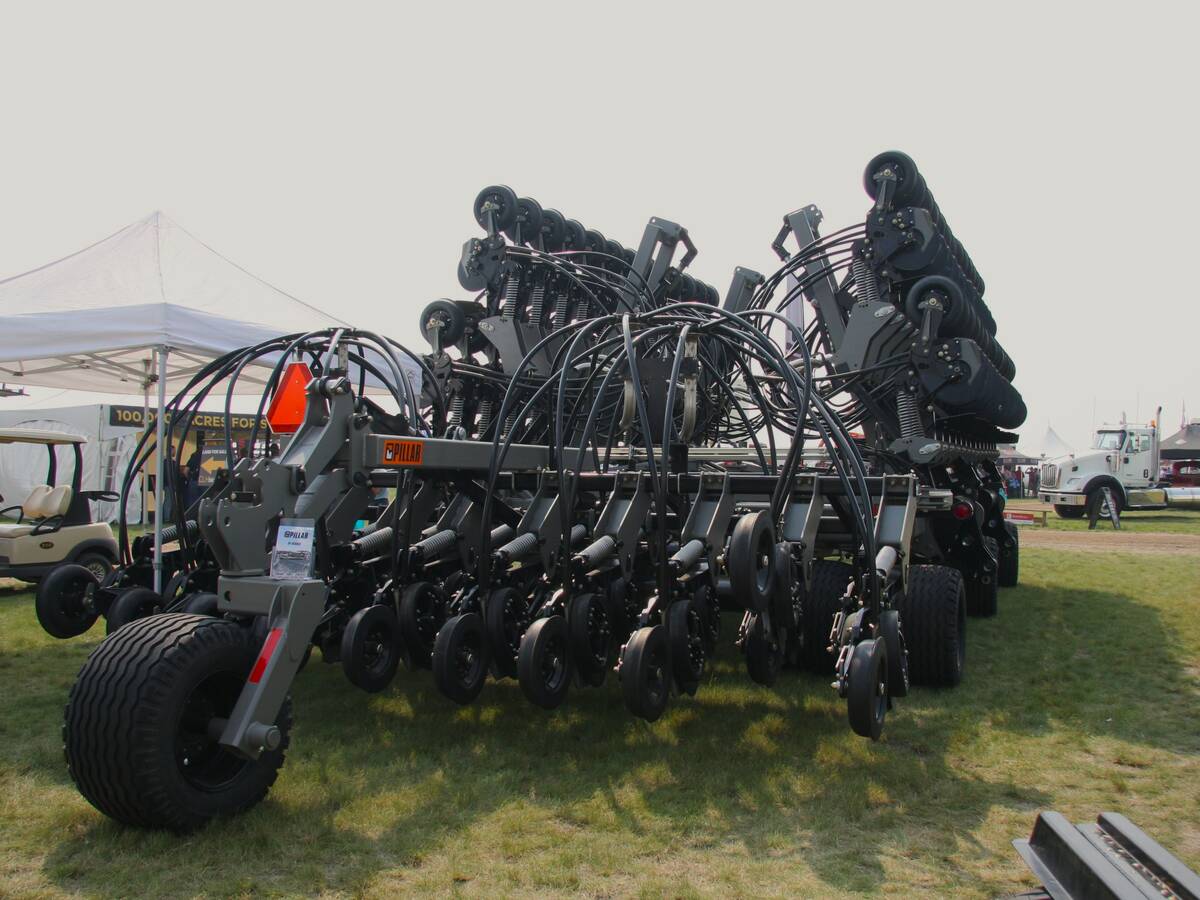
Pillar
Pillar’s Stealth Flex drill transports easily, contours to hills and lows and works “pretty smooth” on high stubble and residue.
“You can confidently leave whatever you can in your fields without having to work it,” said Jagger Bron, Pillar’s Alberta territory sales manager.
“And (you can) keep that soil down and keep the water in there.”
It sports a grass shield to help push aside stubble, a short, shank-like seed boot and a disc for fertilizer, meaning it’s a bit more disturbance than the typical no-till seeding system.
However, it’s proven successful in situations where stripper headers have been used and when there’s a thick mat to get through.
“We sold five drills this year in southern Alberta just to guys that got hailed out and didn’t want to do any tilling,” Bron said.
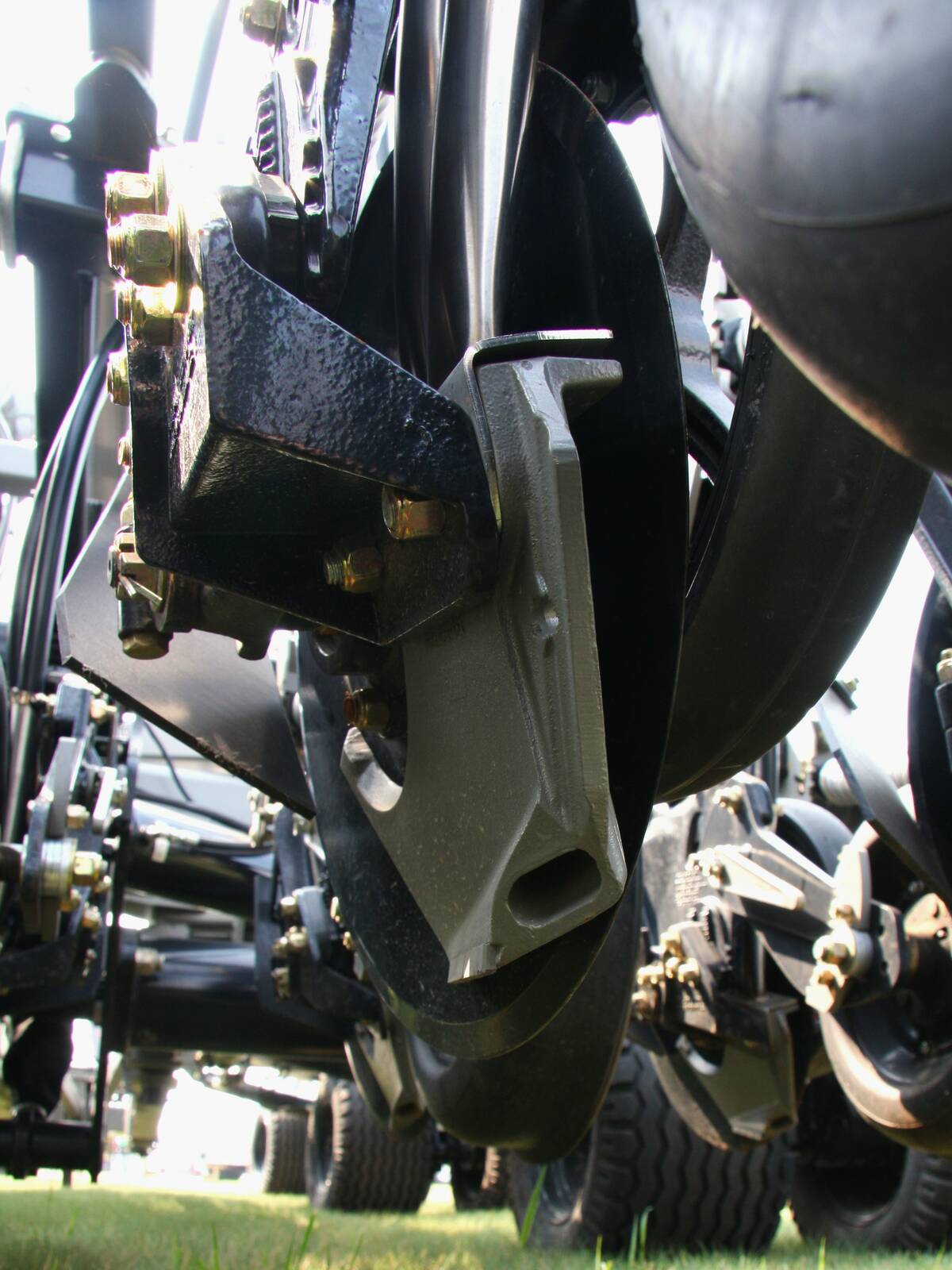
“So, no work on the field. (It went) right through, and it’s honestly some of the most beautiful canola I’ve ever seen.”
Part of this can be contributed to the weight of the drill, which weighs approximately 60,000 pounds with a mostly cast design. The other help comes from the design of the openers.
“Our ‘mark two’, so our last openers and our first ones … they both had springs underneath, so it was kind of a pull. So, going to the (new) push design, you get way more even down pressure.”
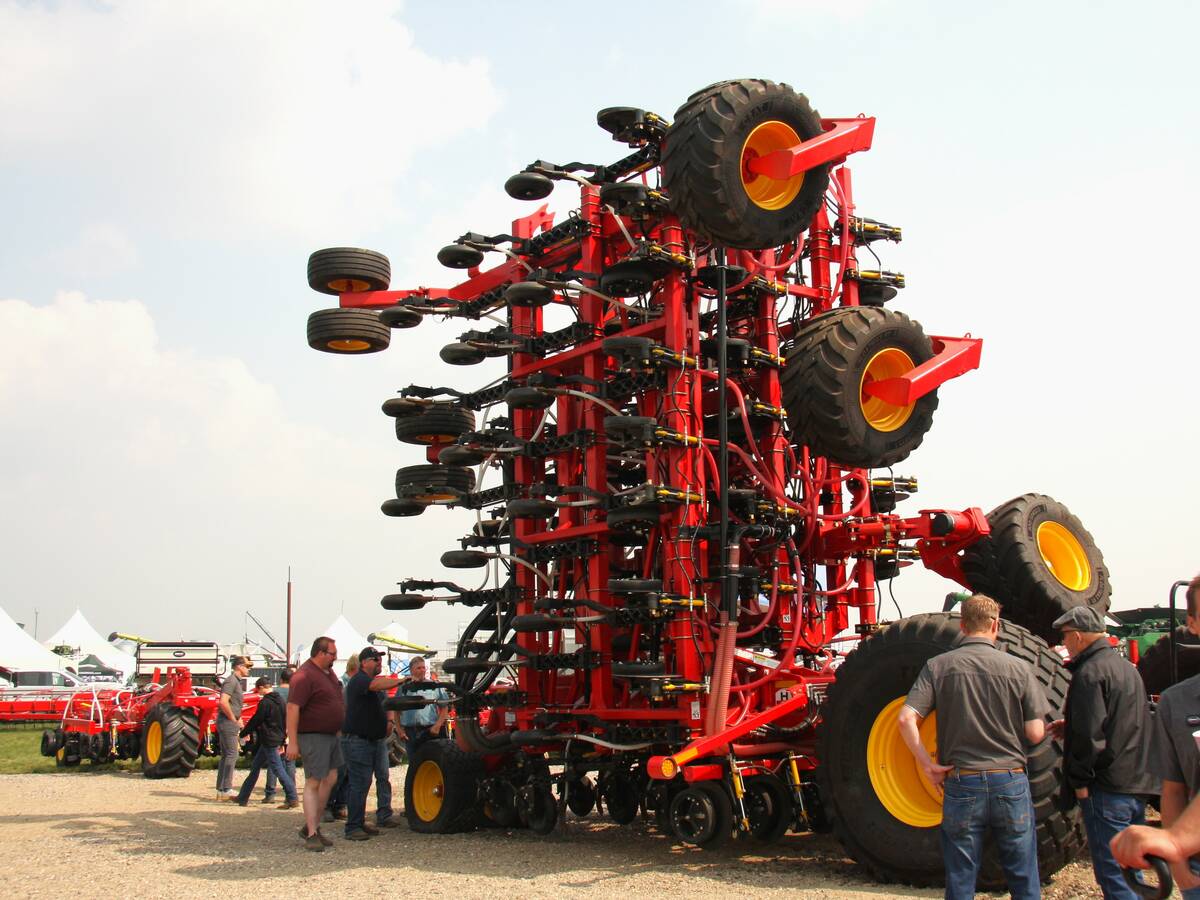
Bourgault
Another option for seeding drills with good pressure is from Bourgault.
Each machine it offers has the option of quick depth adjust (QDA) and heavy weight. The best option for minimum till in its lineup is the Paralink Coulter Drill with the ParaLink Walking opener, which has a single disc at a compound angle paired with a scraper and followed with a packer wheel.
The compound angle helps penetrate the ground and can easily go deeper into the soil, which reduces seed hairpinning.
However, the main benefit of this configuration is the ease of planting in high stubble and thick residue, while also being able to apply fertilizer through the mid-row bander, which helps with moisture conservation.
“The whole idea with a seeding coulter, its advantages are getting through tall residue.… You can seed in the stripper header stubble,” said Curtis Hinrichsen, a Bourgault territory sales manager.
“So that’s conserving moisture that way, also capturing snow in the wintertime. And this will seed through that.”
Pairing the mid-row bander also reduces the amount of passes made in the field, which is important for limiting additional tillage and compaction. Bourgault uses the diamond configuration of mid-row bander and openers, which keeps the seed safe from high rates of nitrogen.
“Every second row will have a mid-row between two seed openers,” Hinrichsen said.
“On this drill, this is a 10-inch spaced drill. That mid-row comes between them two (openers) five inches apart.”
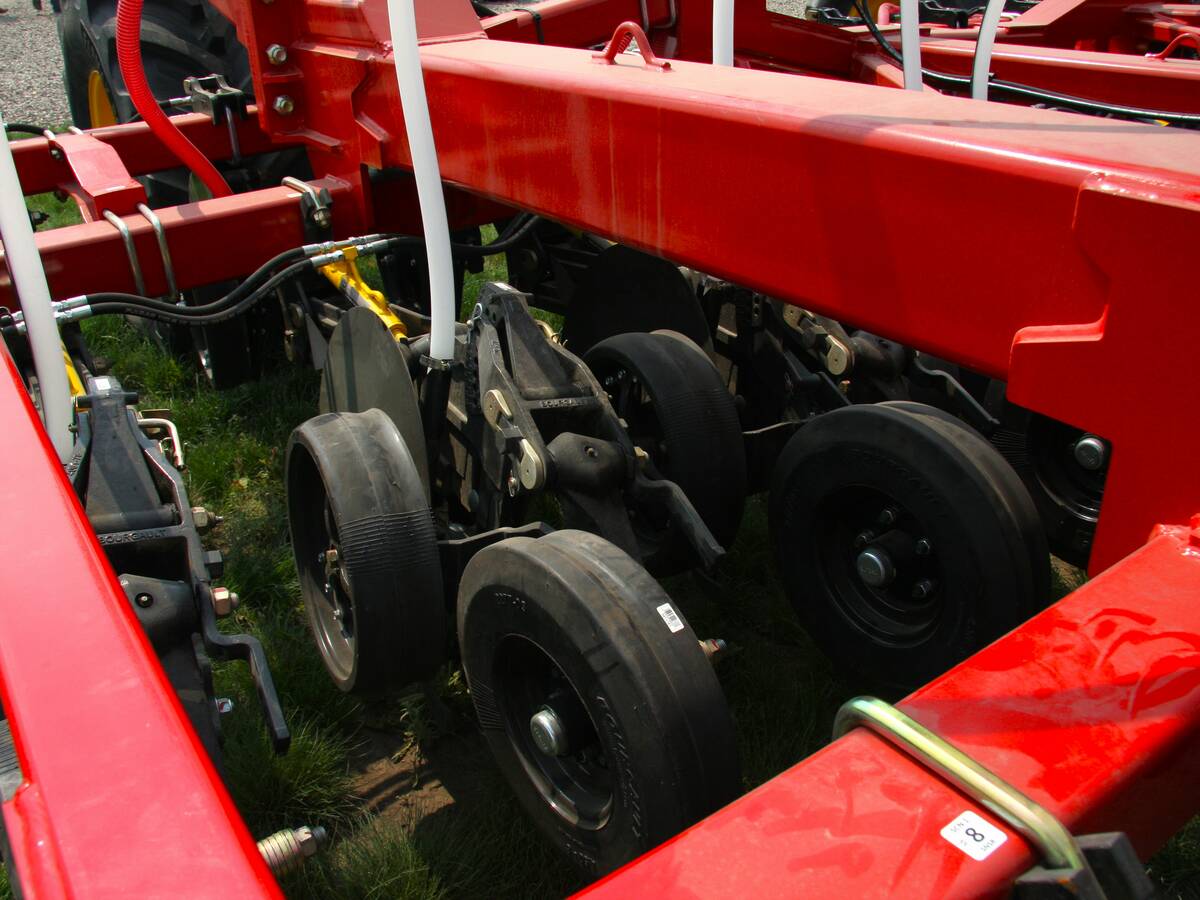
The goal is to place the fertilizer directly in the middle of every other seeded row. With the mid-row bander only at the front of the drill, this places them 20-inches apart and makes it easier to get through heavy residue because the implements are further apart.
The mid-row bander is also available on the Paralink Hoe Drill, which is a bit more disturbance than the Coulter. However, Henrichson said it is the most popular option when paired with the mid-row bander. It’s outfitted with a single hoe point, QDA and packer wheels.
Henrichson said its popularity is due to less maintenance than coulter discs, but added it’s not great if planting into high stubble.
“(Stubble will) wrap around and plug and you’ll be lifting your shanks and swinging around. It’s going to be a problem,” he said.
“So, they certainly have to cut instead of stripper head stubble…. I always encourage if they buy a 12 inch drill, cut their stubble 11 inches. If they buy a 10 inch spaced drill, cut their stubble nine inches.”


